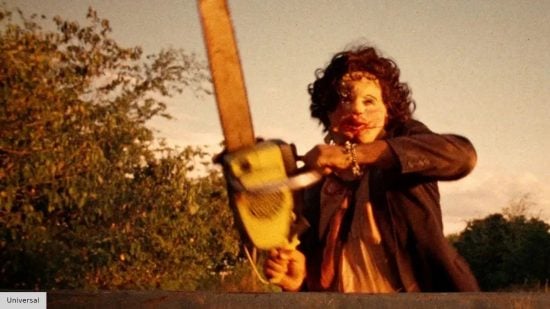It may be almost 50 years old, but The Texas Chain Saw Massacre is still considered one of the scariest movies of all time, even by today’s horror movie standards. Over the years, lead actress Marilyn Burns has spoken of how she became frightened that things would really turn violent on set. And on the other side of that coin is Gunnar Hansen as the iconic Leatherface, who started to feel like a real killer at the most intense moments.
The Texas Chain Saw Massacre was filmed in an absolutely sweltering summer in Texas, in cramped conditions with little ventilation. Real animal bones and blood were used, meaning that the stench must have been overwhelming. This verisimilitude led to a powerful, visceral reaction in the audience and helped make it one of the best horror movies of all time.
There were also several injuries caused to the cast by director Tobe Hooper pushing things on set by using real hammers and chainsaws, and as he told Screen Anarchy in 2014; “Everyone hated me by the end of the production. It just took years for them to kind of cool off.”
In 2013, Gunnar Hansen explained to Nerdist how the infamous dinner table scene towards the end of the movie led to the actors temporarily losing their minds; “If it was 100 degrees outside, shooting that was probably 120-125 degrees. We were in the house with the windows covered and no air moving and all the lights on. So we were already tired, and then you add the fact that we shot 26 hours without stopping, it really broke us, in the sense that at that point we all just wanted to crawl away.” We advise strong caution before watching the scene below!

Both Hansen’s and Burns’ costumes (and mask) were never washed, adding to the stench, and Burns said her costume was “virtually solid” from all of the dried blood. Much like the Blair Witch Project, which came 25 years later, Texas Chain Saw Massacre used the idea of it being real to create more intrigue; “The film which you are about to see is an account of the tragedy which befell a group of five youths…” But this blurring of reality and fiction led to distressing moments on set.
Hansen also spoke about Burns briefly fearing that she was in a ‘snuff movie’ and said, “Certainly, it was brutal for Marilyn, because she was very frightened in a couple of different shots there…at the end of that scene, I finally lost any sense that I was in a movie, just for an instant I thought I was Leatherface and I thought I was supposed to kill her. That was a very uncomfortable moment for me when I realized that this just happened, and I hope I never have that happen again.”
The conditions created by Hooper on set honestly sound horrendous, some of which were caused by the budget and shooting conditions, but also some of which were generated by him to get the reactions he wanted from the cast. These practices wouldn’t be allowed today, and it sounds as though the cast needed therapy afterward, but there’s no denying the power of this landmark of cinema and as one of the earliest and best slasher movies.
If you’re in the mood for something different this Halloween, check out our guides to the best ghost movies, best vampire movies, and the best werewolf movies. We’re also looking forward to Wednesday season 2.
